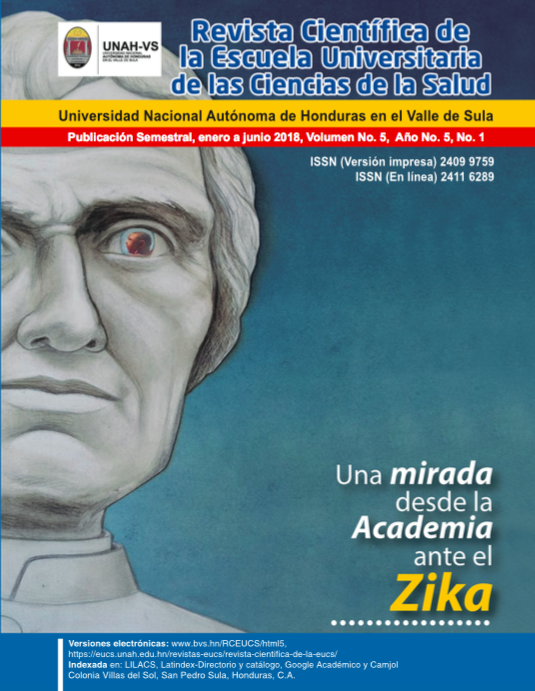Mathematical model for the dynamic transmission of the Zika virus in Honduras
DOI:
https://doi.org/10.5377/rceucs.v5i1.7465Abstract
In historically, infections diseases have made a serious the to socrety. Objective: Analize an implement a mathematical model to predict the dynamics of transmission of the virus Zika in the epidemic 2015-2016 in Honduras. Methods: Was used the model Ross-Macdonald that approximates the number of people and vector (Aedes Aegypti) infected virus, by system of two differential equations non linear to portray inderactions between people and vector, anlyzing by quantitative approach, scope descriptives and desing not experimental cross; using software Matlab. Results: Stability and critical points were found; sensitivity tests were also made to know which are the aspects that increase and decrease the epidemic. Con- clusions: To study the critical points was found the number of reproduction basic, which helps to know. In the out break is endemic or not, also knew the stability that will have the disease; with the evidence of sensitivity was determined that the population vector plays an important role. Also found control the population density vector before the out break is more effective than the vector control and obtaining immunity progresive in addition wa applied the model in the epidemic ocurred 2015-2016, and found that the model Ross-Macdonald ful fills your order despite its limitation, on the other nand is deduced that it is better to use it in intervals short time white the density of vector varies in the different times of the years.
Keywords
Aedes aegypti, Epidemiology, Mathematics, Computer simulation, Zika virus
Downloads
1694




